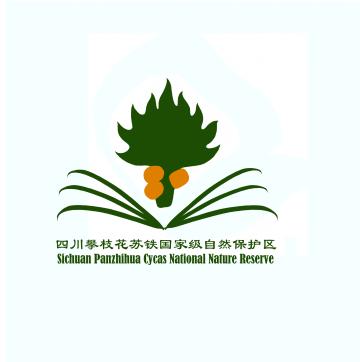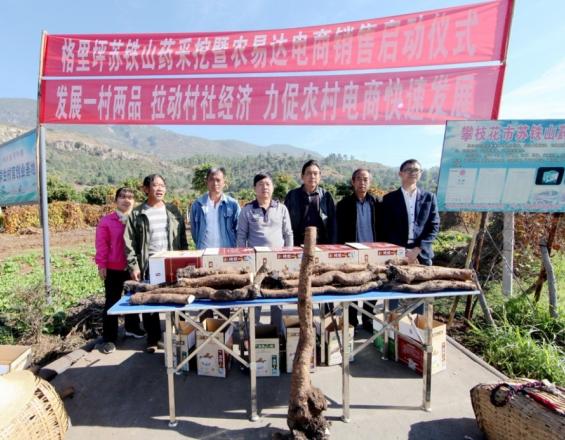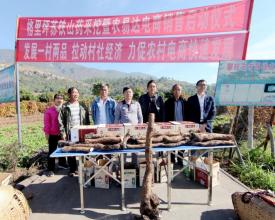
Twenty-Year Collaborative Construction Journey of Cycad Yam

"Cycad Yam" derives its name from the villagers living around the Sichuan Panzhihua Cycad National Nature Reserve, who collected high-quality yam seeds growing in the reserve as germplasm resources for artificial propagation under the guidance of staff from the Protection Center. Traditional digging activities by villagers around the reserve are restricted by the reserve’s relevant laws and regulations, leading to conflicts between ecological conservation efforts and villagers’ livelihoods. Through introduction and cultivation, technical support, and industrial upgrading, a "reserve + community" joint construction model has been established. This initiative provides both ecological and economic benefits, achieving a win-win outcome for ecological conservation and rural revitalization, boosting income for approximately 300 households, and establishing Cycad Yam as a characteristic industry promoting common prosperity in the local area.
Context
Challenges addressed
Social Challenges: Income from digging and selling yams in the reserve was one of the primary sources of income for villagers living nearby. However, the reserve’s policies do not support this practice, which has directly reduced the villagers’ earnings and triggered conflicts between the surrounding communities and the reserve’s management authority.
Economic Challenges: The decreased income of villagers surrounding the reserve has disrupted the harmonious development between the reserve and the community, creating an urgent need for alternative industries to provide support.
Climate Challenges: Panzhihua City has shown an upward trend in both annual average temperature and rainfall, with hotter summers and colder winters. From 2010 to 2024, the annual average temperature rose from 20.3℃ to 20.7℃, and the annual average rainfall increased from 725.7 millimeters to 988.3 millimeters. Due to the increased rainfall, the risk of natural disasters such as flash floods and mudslides has been continuously rising.
Location
Process
Summary of the process
Through the scientific introduction of Cycad Yam, BLOCK 1 provided germplasm resources and technical support for the large-scale industry in BLOCK 2, achieving a dynamic balance between conservation and development.
Building Blocks
Introduction and Cultivation of Cycad Yam
Cycad Yam was introduced to Geliping Village, located just outside the reserve's red line. The Protection Center provided germplasm resources and technical support, guiding local villagers in standardized breeding and sustainable planting practices.
Enabling factors
Soil conditions suitable for the growth of Cycad Yam and the selection of Cycad Yam germplasm resources.
Lesson learned
Non-standard field management during the planting process, inadequate measures for trellis erection to guide vine growth, and insufficient control of excessive growth.
Industrial Transformation of Cycad Yam
The transition from scattered planting by individual villagers to the establishment of a large-scale industry spanning approximately 500 mu (about 33.33 hectares).
Enabling factors
Rural revitalization policies and advanced breeding technologies.
Lesson learned
Market promotion and quality control, as well as the impact of diseases and pests on the growth of Cycad Yam.
Impacts
Ecological Environment: The industrial cultivation of Cycad Yam has reduced human disturbance to the natural habitat of Cycas panzhihuaensis, thereby promoting the conservation of both the species and its environment.
Community and Economy: After more than 20 years of development, Geliping Village now boasts a planting base covering approximately 500 mu. The annual income of planting households ranges from 40,000 to 50,000 yuan, with some families having escaped poverty and achieved prosperity through yam cultivation. The per capita net income of cooperative members exceeds 10,000 yuan, driving income growth for about 300 households. Every year, the village hosts the Cycad Yam Harvest Festival, featuring activities such as the "Yam King" competition, auctions, and agricultural experiences to attract tourists. This event promotes an integrated cultural and tourism experience, establishing a distinctive agricultural brand.
Biodiversity: Artificial planting has alleviated pressure on wild resources, thereby indirectly contributing to ecosystem stability.
Climate Change: Over more than a decade of development, the cycad yam industry has demonstrated significant adaptability to climate change. The industrial park has expanded from the initial over 10 mu to 500 mu currently, with its scale growing steadily. Meanwhile, the per mu yield has remained stable at around 2,000 jin, ensuring a reliable food supply capacity.
Beneficiaries
Direct Beneficiaries: Local villagers.
Indirect Beneficiaries: The reserve, Consumers and Tourists, The Government and Industries.
Global Biodiversity Framework (GBF)
Sustainable Development Goals
Story
Cycad Yam is named for its association with Cycas panzhihuaensis. Compared to ordinary yams, it has a more fragrant and glutinous taste, making it highly favored by local people. It was once an important source of income for local villagers. However, laws and regulations of the nature reserve prohibit activities such as entering the reserve to dig, which has reduced the income of villagers who depended on the reserve’s resources.
Faced with the dual challenges of ecological conservation and the livelihood needs of local residents, the Protection Center and the Geliping Village Committee, under the guidance of the Protection Center, decided to introduce high-quality yams from the reserve to Geliping Village at the mountain’s base for planting and cultivation. They also provided germplasm resources and technical support. This initiative not only protected the original habitat of Cycas panzhihuaensis but also offered an alternative livelihood for villagers, marking a crucial turning point in resolving the conflict.
After more than 20 years of development, Geliping Village now boasts a planting base of approximately 500 mu. The annual income of planting households ranges from 40,000 to 50,000 yuan, with some families having escaped poverty and achieved prosperity through yam cultivation. The per capita net income of cooperative members exceeds 10,000 yuan, driving income growth for about 300 households. Every year, the village hosts a Cycad Yam Harvest Festival, featuring activities such as the "Yam King" competition, auctions, and agricultural experiences to attract tourists and promote an integrated cultural and tourism experience.
Today, as a key agricultural product cultivated in the development of the Common Prosperity Zone in the Western District, Cycad Yam is not only a delicious food but also a vital industry driving increased farmers’ incomes and promoting shared prosperity in the local area. It serves as a model of collaboration between the reserve and the community, integrating ecological conservation with industrial revitalization.
